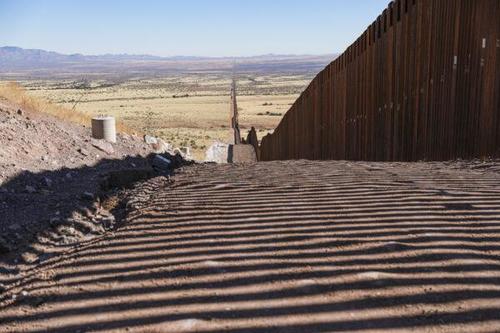“We’ve Got A Gun At Every Door In The House”: Border Rancher Sees 2,400% Increase In Illegal Aliens On Property
Ranching and smuggling are respectively the primary legitimate and illegitimate economic drivers in Cochise County, Arizona.
Much to John Ladd’s frustration, the two industries intersect on his ranch, which is sandwiched between the U.S.–Mexico border and highway 92, a convenient smuggling pick-up road.
Ladd’s ranch shares 10.5 miles of border with Mexico and in mid-2019 had an average of 12 illegal aliens traversing his land daily, with Border Patrol catching about half. Now, he says, it’s about 300 a day and Border Patrol catches about 30 percent on a good day. The numbers started escalating the same time the 2020 presidential election swung Joe Biden’s way.
“I’m not going to say there’s no hope, but nothing’s going to change as long as Biden’s there and his administration,” Ladd told The Epoch Times on Dec. 8. “And so what are we going to do? Just let them come through?”
The illegal immigrants traversing Ladd’s ranch aren’t seeking asylum—they’re mostly young, single men dressed head-to-toe in camouflage clothing and doing everything they can to avoid law enforcement and get to Phoenix.
“These people can’t turn themselves in, they’ll get deported. These are the bad people. We’re dealing with the worst of the worst,” Cochise County Sheriff Mark Dannels said.
Dannels’s border team has placed hundreds of trail cameras throughout the county since 2017 to detect illegal aliens, traffickers, and smugglers.
“We put our cameras in areas where Border Patrol wasn’t going,” he said. “We went to the river areas, we went into the mountain areas, we went to the desert areas,” he said. The money for the cameras was raised from private donations—Dannels refuses to accept government money that has strings attached.
Four years ago, the sheriff’s border team, called SABRE (Southeastern Arizona Border Region Enforcement), rid Ladd’s ranch of drug smugglers, which was the biggest problem at the time.
“There were 37 experienced smugglers [on his property] that are now sitting in prison,” Dannels said in 2019.
The drugs are still coming across, but the cartels are making an endless amount of cash with human smuggling, so they’ve added a lucrative new revenue stream. Currently, Dannels’s cameras are detecting about 6,000 illegal aliens per month in the county, while Border Patrol is detecting an additional 10,000.
Detective Jake Kartchner, who is part of the sheriff’s border team run by Sgt. Tim Williams, said each illegal alien must pay the Sinaloa cartel between $7,000 to $9,000 on average to get across the border.
Getting across the border and to a road is the first step. Next, a smuggler receives a GPS location of a group, loads them up, and heads to Phoenix. The drivers are mostly U.S. citizens who are recruited via social media and paid about $1,000 per alien transported to Phoenix, according to the sheriff’s office.
“It’s like the cartel Uber. They just stage in public places all along the roadways waiting to get called up to go pick them up,” Dannels said. He said 900 to 1,000 smuggling vehicles have been tracked in the county each month.
Ladd said he has watched vehicles load up on highway 92 after crossing his property.
“Those cars aren’t even stopping—they’re slowing down and they’re running along and open the door and jump in and off they go,” he said. “It’s very well coordinated.”
No state law against smuggling illegal aliens exists in Arizona and the federal government isn’t prosecuting juvenile drivers or those transporting five or fewer aliens, according to Cochise County Attorney Brian McIntyre.
Read the rest from Charlotte Cuthbertson HERE








Comments are closed.